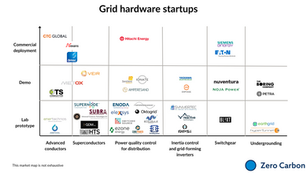top of page


How to have your beef and eat it too: reducing enteric methane emissions
At Zero Carbon, we have spent the past year thinking about one of the biggest sources of global greenhouse gas emissions: enteric methane emissions from livestock. These emissions remain unsolved as behaviour change and policy incentives have not taken off. In this article we review the scale of these emissions, the biochemistry in ruminant animals that produce them, the innovations being developed to solve them, and the drivers and barriers for these innovations. We share a


A critical assessment of the nuclear renaissance – do we need technology breakthroughs?
Nuclear power (from fission) is an established, zero-carbon electricity source and currently supplies approximately 9% of global...


Innovations to close the copper supply-demand gap
Copper metal has been critical to humankind’s development since the Bronze Age around 3000 BC. It is the third most widely used metal by...


Iron & Steel - Hardware plays that could make a difference
The decarbonisation of the steel industry is proving to be a major challenge. The production of steel accounts for around 7% of human...


What to do with wet waste
This article explores the untapped potential of waste water and wet waste - byproducts of our societal and industrial activities that...


Modernising the grid: hardware innovations for the energy transition
This is the second article in a two-part series about investing in grid technologies. Read the first part here. In our previous article...


Modernising the grid: the case for investment
This is the first article in a two-part series about grid technologies. Here we cover the need for grid expansion and improvement, and in...


Beyond fossil fuels: Carbon-based chemicals without the emissions
Carbon-based chemicals are critical to modern life—from the plastic packaging that wraps our food in the supermarket (polyethylene),...


Ammonia: fertiliser and future fuel
What is ammonia and what is it for? Ammonia is essential to human life on earth. The size of the global population today would be much...


Grid-scale storage technologies: technical view
This is the second post in a series on long-duration energy storage. As mentioned in Part 1 of this post on grid-scale energy storage,...


Long-duration energy storage: enabling renewable build out
We need to decarbonise electricity generation. Electricity generation worldwide accounted for 12.3 Gt CO2e in 2020, or around a third of...
bottom of page
